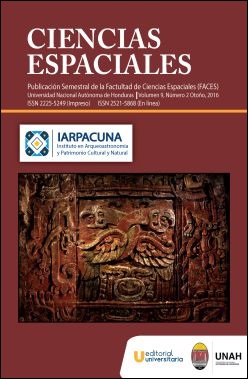Centrality of the Temple 16 during the Kingdom of Yax Pasaj in Copán
DOI:
https://doi.org/10.5377/ce.v9i2.5161Keywords:
Copan, Temple 16, sculpture, iconography, political legitimationAbstract
The public art that appears on the buildings´ facades conveys complex topics, messages directed to a wide audience, seeking the legitimization of the ruler´s position. Fragments of architectural sculpture from the Late Classic Copan site indicate that the buildings display particular messages either individually, or in a combined manner, by utilizing local maya or foreign imagery. Foreign traditions are related to the distant center of Teotihuacan in Central México. Teotihuacan traditions are present at the site from the early Classic (430 A.C.), around the time of the founder K’inich Yax K’uk’ Mo’. Yax Pasaj, last ruler of the founder´s dynasty, emphasized a large scale cultural heritage on Temple 16. The sculpture analysis from the temple resulted in the identification of 63 different motifs, which revealed three main iconographic themes: the building as a symbolic mountain both for the dwelling and resurrection of the ancestral founder; as the place of ritual for commemoration and reestablishment of war and human sacrifice and; as a representation of the universe.
Downloads
1077




